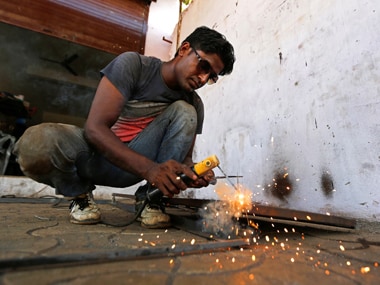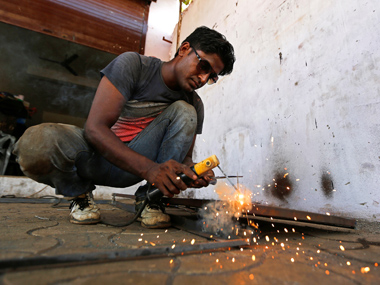A 60 bps jump in the second quarter GDP (gross domestic numbers) to 6.3 percent from 5.7 percent in the preceding quarter has revived hopes of an economic recovery. The Q2 numbers snapped a five-month decline trend in growth numbers primarily aided by a pick -up in manufacturing sector and certain services. Union finance minister Arun Jaitley called a presser to announce that the Q2 numbers indicated economy is past the impact caused by demonetisation and GST (goods and services tax) and economic growth will only improve from this quarter onwards. Is it really the end of the economic decline cycle? Are there strong reasons to celebrate the 60bps jump in growth in the second quarter? Let’s find out. [caption id=“attachment_4236685” align=“alignleft” width=“380”]  Representational image. Reuters[/caption] First of all, there is no marked improvement in the growth trend to begin the celebrations, but only signs of marginal recovery from a prolonged declining trend. If one looks at year-on-year growth numbers, the GDP in the second quarter has fallen from 7.5 percent to 6.3 percent. That’s a fall of 120 bps. Before reveling on the 60 bps improvement quarter on-quarter, one should take note of this. What aided growth? The answer is, primarily, mining and the manufacturing segments. Growth in the manufacturing sector improved to 7 percent from 1.2 percent in the preceding quarter but, even here, on a year-on-year basis, it has slipped from 7.7 percent. Mining registered a substantial growth to 5.5 percent from negative 0.7 percent in Q1 and negative 1.3 percent in the year-ago period. Similarly, electricity grew by 7.6 percent as against 7 percent in preceding quarter and 5.1 percent in the year-ago quarter. Trade, hotels, transport and construction too aided, with the segment growing 9.9 percent compared with 7.7 percent in the year-ago period. But, what does the uptick in the GDP numbers does not tell us? Looking a little closer, one can see that agriculture growth has fallen to 1.7 percent in the second quarter from 2.3 percent in the first quarter and 4.1 percent in the year-ago quarter. This is a major worry. The gross fixed capital formation (GFCF), has risen to 4.7 percent during the quarter compared with 1.6 percent in the preceding three months. But, that is on a low base of 3 percent in the year-ago quarter. Hence this is largely a statistical jump. If one looks at GFCF at constant prices as a percentage of GDP, the picture turns clearer. Here, the figure has fallen from 29.4 percent in second quarter last year to 28.9 percent in second quarter this year and compared with 29.8 percent in the preceding quarter. In current prices, it has fallen from 27.1 percent to 26.4 percent. What does it mean? Investment scenario still looks bleak. There is no money on the table from private investors yet.
So far, what has been largely holding the growth is consumption, both from the government and private sector. But, even that has not taken firm hold yet. Growth in government consumption expenditure has fallen from 17.2 percent in the first quarter to 4.1 percent in the second quarter and compared with 16.5 percent in the first quarter last year. Part of this is on account of the payment of the pay commission arrears last year. But, even then the decline is notable. Going ahead, the government is in a tight spot as it cannot cross the red line to safeguard the fiscal roadmap. Growth in private consumption fell to 6.5 percent from 6.7 percent in the first quarter and 7.9 percent in same period last year. Having investments dried up, consumption was the only major driver for growth, which too has failed to impress in this quarter. The other major indicator one should not miss is construction, where the growth has declined to 2.6 percent in the second quarter from 4.3 percent in the year-ago quarter, albeit a minor pick up compared with the preceding quarter. This is the sector which provides a large number of jobs and the growth trend is indicative of what is happening on the ground. The government should take note. With job creation remaining a pain area, investments not picking up and consumption taking a hit, there is no reason for one to celebrate the 60 bps jump in the second quarter GDP numbers. The better approach is to wait for the numbers in the coming quarters to understand whether the slowdown phase is over or not. It’s too early for celebrations. (Data inputs by Kishor Kadam)


)




